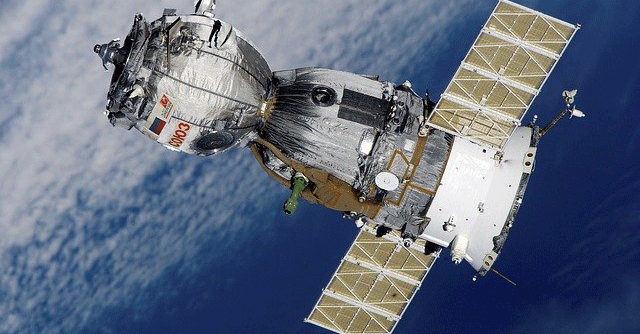
Satcom operators turn to new high bandwidth satellites to take on telcos


Satellite internet operators, who have sent thousands of satellites up in space in hopes of providing internet to remote areas, are turning to a new crop of satellites called Very High Throughput Satellites (VHTS) to take on telcos. Companies like Bharti Airtel’s OneWeb, billionaire Elon Musk’s SpaceX and more have faced scepticism about whether broadband internet provided through satellites can match bandwidths provided by high-speed broadband services from telcos.
Very high throughput satellites refer to a relatively newer crop of fixed service satellites (FSS), typically deployed at a geostationary equatorial orbit (GEO) of 35,786km above the Earth’s surface. They offer significantly higher data bandwidth over the previous generation FSS satellites. FSS satellites are used in television broadcasting and telephone communication, and depend on dish-style antennas.
“The cost of satellite-based internet operations is no longer prohibitive, thanks to the advent of VHTS. These satellites multiply the number of spot beams (radio signals used to relay information in satcom) that they offer and have far greater throughput, which leads to significantly reduced cost per bit of connectivity,” said Bashir Patel, senior regional advisor at British satcom firm Inmarsat and coordinator for the Global Satellite Operators’ Association (GSOA).

As a result, Patel added, that the cost of satellite internet connectivity in rural and remote areas can closely rival terrestrial telecom operators looking to provide fiber-based broadband connectivity. According to Pranav Roach, president of Hughes Network Systems India, such technologies can help satellites offer over 100 gigabit per second (Gbps) data throughput, in turn translating to over 100MBps download speeds on the ground.
“The biggest advantages that VHTS can offer is consistency of network bandwidth and speed even in remote areas, which is very hard to achieve for on-ground fiber broadband operators today,” Roach added.
Hughes is planning to launch VHTS operations this month, while competitor SES is expected to start such operations from October 2021. Inmarsat also launched VHTS satellites in December 2021 and aims to launch seven of them by 2024.

Roach, however, warned that satellite internet services may not be able to match terrestrial network costs exactly penny for penny even with VHTS, but their internet services would be significantly more consistent and faster, leading to much larger use cases and development of services in non-urban areas.
Both experts and industry stakeholders said that India still has a way to go before VHTS satellites can be used effectively here. Roach said that high throughput satellite internet services that are presently available in India “are not at par with the rest of the world”.
“For instance, we are looking to lease satellite capability from the Indian Space Research Organisation’s GSAT satellites, but their data throughput is far lesser than international HTS services like Jupiter-1. The bandwidth available here is to the tune of about 1Gbps, while international services are already at around 100Gbps,” he said.

Further, T.V. Ramachandran, president of the Broadband India Forum, said that the awaited SpaceCom policy can help shed light into how private satellite operators will be allowed to participate in this space.
“The need for live video communication services, or Internet of Things (IoT) deployments in farms, is far greater in rural areas – in comparison to urban ones. These require technologies such as satellite communications, which can augment upcoming 5G services in the country.”
